Since the Mavic 2 and later the Mavic 2 Pro I am as a TWAN Photographer, ESO Ambassador and Partner of the State of Tyrol’s Helle Not Project experimenting with Landscape Astrophotography with Drones, and here especially with DJI Drones. This is to add flexibility to my many ground based documentations of Light Pollution and it’s change over time with different Light fixtures, and the absence of Light Pollution at Dark Sky areas.
It is important to note, that we Astrophotographers obviously have a different understanding of low light than DJI. What DJI and many Drone Pilots understand as „Low Light“ are in fact images or Videos of terribly light polluted Cityscapes. It is not very difficult to capture Images above such light polluted Landscapes – there’s plenty of light from below and on the illuminated Horizon, and the Drone Sensors are in a way optimized for such endeavors.
But the absence of Light Pollution and real Low Light is, where it get’s demanding for DJI’s drones. It is then under Dark Skies the Photographer at the Controls needs to know his trade and the Sensors and attached Lenses capabilities, plus best practice in Post Production.
In general the same principles which apply to Landscape Astrophotography and Lowlight Outdoor Photography are valid for Drone Landscape Astrophotography. Means you have to plan your Shots meticulously and accordingly in advance, and also you do need to have all the necessary permits organized pre capturing.
Why, by the way, would you go to such lengths to try to capture the Milky Way / Night Sky with a Drone? As with Day imaging, the Drone allows for simply much more freedom on compositing the Shot. While newer DJI Drones can do Hyperlapses, what fascinates me most are Night Sky Panoramas. But these take a while when exposing each shot with say 5 Seconds. Patience is needed and good Batteries.
A great recommended reading regarding Landscape Astrophotography is the amazing eBook „Nightscapes and Timelapses“ as well as the „Backyard Astronomer’s Guide“ by legendary Canadian TWAN Astrophotographer Alan Dyer.
If you have read trough these (e)Books, no Drone Landscape Astrophotography shot will be impossible for you anymore… Because a DJI Drone Camera is basically not much different from a DSLR or MDSLR only that it is limited by maximum exposure to 8 Seconds, it doesn’t allow for accurate Live View pre-focusing on Stars, and it is fixed on a Gimbal.
Regardless which DJI Drone you use, the High ISO DNGs RAW Stills of these Drones are prone to strong Image Noise. Tipp: I use the excellent Noise X Terminator for removing most of the Noise, and it is so far the only AI Filter Plugin I found which does not introduce blotchiness while reducing noise. This exact „Grain“ Noise Blotchiness, where there are new kind of Blotch Patterns created is a problem DXO’s and Topaz‘ Denoise AI’s do have – especially with DJI DNGs but it can happen with High ISO Astrophotography Images.
See a great test comparison of current Noise Reduction Apps by TWAN Astrophotographer Alan Dyer.
So below is a summary of what I found over the Years regarding the DJI Lineup and Landscape Astrophotography with it’s Drones.
1. Mavic 2
7 Years ago the Mavic 2 with it’s 12 MP 1/2.3“ CMOS Sensor gave me the means to start the first experiments and tests with Drone Landscape Astrophotography, and to get used with flying at night or moonlit landscapes. Also what to look out for in Post Pro with Lightroom and Photoshop. The learning curve was steep.
However, Images were always super noisy even at ISO 1600, Dynamic Range was meh, regardless if there was a full moon (just compare the full moon images with the P4P’s). But it was a start. Stars were getting visible with a Drone. Amazing.
2. Phantom 4 Pro
Well, a Sony 1″ Sensor with a f2.8-11 24 mm Lens in the Phantom Series!
That would change things a bit, and I kind of discarded the Mavic 2 and flew the P4P many times at night to document Light Pollution, while I flew it during the Day for some of my best Mountainbike Videos. Solid as a rock, extremely capable, decent flight times – this Drone especially in it’s Phantom 4 Pro iteration is a true Legend, and I still fly it today occasionally for the fun of it.
And still after all those years the P4P is a decent Performer at Night.
It’s Exposure sweet Spot is around 1 Sec / ISO 1600. Going higher like for example 3 Sec / ISO 3200 is possible, the Gimbal can handle it usually, but increases Noise dramatically. So in fact a Full Moon is your friend where you can do those 1 Sec, ISO 1600 Exposures and all is good. It’s when P4P Images really start to shine.
Then my next goal was: Capture the Milky Way with a Drone!
During 20th of May, 2018, while shooting Astro, I finally managed to capture the Milky Way with the P4P on the Canary Island of Santa Cruz de La Palma!
You need to know, that the lesser a Sensor is equipped for long exposure photography, the brighter the Milky Way needs to be. So: La Palma, a beautiful volcanic Island within the Canary Island Chain with the best Night Sky and the brightest unspoiled Milky Way in the World (aside the ESO Observatories in Chile) provided the perfect Opportunity to nail that shot. I’ve been to La Palma 33 Times for Astrophotography and Biking and some occasional Drone Flying so I know every Stone on that Island by Name and the best Locations.
A year or so later, I managed to capture the Milky Way again at Tyrol. Which is never easy with lot’s of Light Pollution at the In-Valley.
So, considering it’s small 1″ Sensor and the age of the Drone, the P4P did a remarkable Job capturing the Milky Way.
3. Mavic Air 2 S
Comparable to the Phantom 4 Pro the Air 2S sports a 1″ Sensor as well, but with a 22 mm fixed 2.8 Aperture Wideangle Lens instead of the 24 mm of the P4P.
While the Air 2S is for sure an improvement over the P4P regarding form factor, size, portability, flight times, active tracking, daylight Video quality etc, it’s Night imaging capabilities were not what I had expected.
Which is interesting, since from a modernized Hardware and probably a bit improved Sensor and Imaging engine you would expect that, but compared to the bigger glass of the P4P and it’s excellent Sony Sensor the Air 2S seems to not be able to keep up at Night. If you directly compare the size of the rather huge Lenses of the Phantom 4 Pro vs the smaller ones on the Air 2S this might explain the Performance differences a bit.
However, the Pictures speak for themselves…
During warmer temperatures the Air 2S showed some brutal greenish amp glow, and you really need to forget about Milky Way photographs with that Drone, see Image 25.
While during the Day this Drone is amazing with it’s 22 mm Lens and a great Video quality, in the night the Air 2S is kind of blind like a Mole. And I really pushed the Air 2S to it’s limits there, but it didn’t improve.
It get’s a bit better with Moonlight shots, where the Sweet Spot of the Air 2S is around 1 Sec / ISO 1600 and one can even try a Hyperlapse or Panoramas. But that’s it then.
4. DJI Inspire with X5s and MFT Lenses (Panasonic, Olympus etc)
DJI’s remarkable Inspire 2 with it’s X5s Camera is a great Filmtool with CinemaDNG RAW and ProRes Capabilities and you can even pull great Stills frames from CNDG RAW Footage. But combined with fast f1.7 or f2 MFT lenses, the X5s is a relatively good Low Light stills camera (ok, the Lenses are soft at f1.7, f1.8 etc but hey). Relatively…, since on the one hand the MFT 4/3″ Sensor has a quite useable range of max. ISO 3200 for Stills, while in reality you are always better off with ISO 1600. And you should definitely avoid ISO 6400, which is only the last straw on the rarest emergency needs, as the Noise with ISO 6400 is brutal.
And on the other hand DJI has never put much effort on Firmware Optimization for the X5s‘ low light capabilities in general and stills in peculiar.
I am sure the X5s could do a much more remarkable job if DJI would have done it’s homework there. Gimbal drift is BTW always an issue on the X5s and long exposures.
Note that all the shots below are rather lucky ![]() shots. A shot where the Gimbal does not drift is usually achieved 1 out of 10, and with drift I mean like „Micro Drift„.
shots. A shot where the Gimbal does not drift is usually achieved 1 out of 10, and with drift I mean like „Micro Drift„.
See here „Inspire 2 X5s Gimbal Drift: https://vimeo.com/314486365
This shows on the display if the gimbal has moved during a Shot with the Stars or Constellation start position – prior to release, then the Stars position after the Shot is finished. If the position of the Stars has changed after the End of the Exposure you had Micro Drift – repeat until you get a few lucky shots where the Stars remain at the same position during start and end of Exposure.
5 to 8 Seconds Exposure are a relatively long time during which the Drone hovers and the Gimbal tries to counterbalance the heck out of it. And windstill nights are mandatory too, since the I2 is known to bounce around when hovering, and Wind adds to this bouncing making it even harder for the Gimbal not to drift and shake.
I love to capture Orion at quiet Winter Nights. First Image is a stitch of 5 single images.
Here’s a crop, and with the X5s you can even see the Orion Nebula’s glow. Wow!
This is how the same Scenery in Image 27 and 29 looked like captured with the Nikon Z 6. I would say – the X5s is quite good!
A few Images from a remarkable Session with the Moon Setting above the Stubai Alps.
I love to do Panoramas with the Inspire 2 and the X5s from time to time. I use Litchi for that, stitching is done with Lightroom (faster) or Ptgui (slower, more powerful).
Note that as with all other DJI drones, no one at DJI Fly App programming Departement ever thinks about the option to give the Gimbal some defined time to pause and stabilize between Long exposures. While the Inspire 2 in theory can hover and let the Gimbal rotate for Panoramas, all the smaller drones reorientate themselves, with no time to rest and stabilize the gimbal between moves and the following long exposure. Duh!
X5s and the Milky Way!
The Astrophotographer I am, I have of course tried to capture the Milky Way with the X5s. And it worked actually quite well for Tyrol Skies.
I didn’t manage to bring the I2 to La Palma yet, but if I do one day, then Holy Smokes!

Image 57 to 59 are from a larger Set I did at the Kaunertaler Glacier while documenting the Sky for a Tyrol Environmental Agency Starlight Project. It was a perfectly Windstill night with extremely strong Green Airglow, and these are all Lucky Shots out of like 50 with Gimbal Drift or other Drone vibration/movement Shake. Again: The X5s is quite capable of low light if used well and the Conditions are excellent.
Back home I managed two good X5s Milky Way Shots at the Alpenhauptkamm and one Early Bird shot at Dawn above Innsbruck.
And here’s a side by side Shot of DJI X5s vs Nikon Z 6. Well, summer humidity and Sky transparency on the Austrian Sky often makes it hard for the X5s to keep up, and even the Z 6 struggles there.
5. DJI Inspire with X7 and DL Lenses
I have tested and filmed with the DJI Inspire 2 and the X7 and it’s DL Lenses plus the Laowa 9mm/f2.8 Zero D lens a lot. The X7 Camera and CinemaDNG RAW and ProRes RAW tops the X5s combo Video wise, and is an outstanding Super-35 camera. One would think at Night too. Well, yes and no!
First the X5s physically outperforms the X7 due to the faster f1.7/1.8 lenses, and second DJI in Reality has not really bothered with the Low Light Imaging capabilities of the X7. Is it any wonder when DJI engineers live and work in light-polluted Chinese cities? No. Do they even know how mesmerizing a Dark Sky area looks and feels like? How beautiful and mind changing a brilliant Milky Way looks like? I hope they do at some point in the future, so that we see more DJI Sensors with great low light capabilities.
Until then, the I2’s Firmware is at a real Dark Sky trying hard and succeeds at not using any of that S-35 Sensors Low Light capabilities. They must be hidden somewhere, or regularly get lost on the Way to the I2’s imaging Engine. With Moonlight it’s a bit better, but still…
Note that Image 77 is captured at the same spot like with the X5s and Image 57 before.
Moonlight like with Image 61 and Light Pollution by Cities like with Image 78 is kind of the only way to let the X7 capture at least some stills that are worth it and not that super noisy. Image 78 was captured with the 50 mm DL, a very lucky shot, which actually shows the potential that Lens would have for Astro. Image 79 was done with the tack sharp 16 mm DL and the I2 rested on the Ground (it was too windy that Night). However, with f2.8 the often underrated DL Prime Lenses which are of excellent Quality, never stand much chance at Night to the various available f1.7 and upward lenses of the X5s although these are softer wide open.
Maybe, we see a f1.7 or even a f1.4 DL Lens sometimes in the Future? Who knows what the Lens Gods at DJI are occupied with.
I tried another Session the year after and here the X7 was a bit better combined with Light Pollution in the Valley. See the comparison Images for Noise, so you get an idea what you are dealing with under such conditions.
Note that on Images 92 to 97 the little purple Tint around Orion Nebula (M42, NGC 1976) that is usually visible with the X5s, is not resolved by the X7. It is just not there in the DNGs at RAW level.
6. Mavic 3 Classic
I have only recently started to test the Mavic 3 Classic with it’s MFT 4/3″ Sensor. The results are quite reasonable considering that the sensor is blocked from picking up a lot of starlight by a lens with a fixed f2.8 aperture. The M3 Classic’s Sensor does the best with the Situation. Noticeable at all images is a faint Green Amp Glow that get’s more prominent when the DNG is post processed more aggressively.
Also the Imaging Engine introduces greenish and purple-ish blotches into the Image. This could be better, and it would be nice if DJI would work on this.
However, the imaging engine of the M3 Classic is 4 years younger than the X5s‘, and that said the Classics Camera is an improvement anyway, as it is embedded within a relatively compact chassis. Plus the M3 Classic has a very good flight time with around 30 minutes. And stable Hovering is the trademark of the Mavic 3 Series. That helps immensely with pulling off long exposure shots at Night from a hovering Drone.
Dark Sky Samples
Note the green and purple-ish Color blotches on Image 108. The Panorama itself is remarkable, but there are images within the stitch where the Drone / Gimbal shook after rotating the Drone. That’s why a pause like 3-4 secs to stabilize between these Nightshots would be so important.
So far the M3 Classic has shown a good useable ISO 3200, fairly useable ISO 6400, and stabilizes well up to 8 Seconds exposure. Sweet spot is ISO 3200 with 3.2 to 5 Seconds exposure. But it fights against the f2.8 limit of the lens, which can be clearly seen. I am sure this Iteration of the M 4/3″ Sensor could do so much more at Night combined with a fast aperture like f1.7.
7. Panorama VRs
With Moonlight and short Exposure Times it is even possible to do VR’s. Here are a few:
Inspire 2 / X5s: https://christophmalin.com/VR/X5s_Brenner/index.html
A very RAW one done with I2 and X5s: https://christophmalin.com/VR/Innsbruck_Inspire/index.html
Phantom 4 Pro Panos here: https://christophmalin.com/VR/P4P_Brenner/index.html and here: https://christophmalin.com/VR/Brenner_Panorama_Neu/index.html
And probably the most beautiful I have ever done with P4P at La Palma: https://christophmalin.com/VR/pano_mendo_web/output/index.html
8. The future of Drone Landscape Astrophotography?
First a Conclusio: The X5s is far from been pushed from the Dark Sky Imaging Throne by the Mavic 3 Classic, and still offers much more night vision capabilities with fast, interchangeable lenses. But of course it is aging. The X7 is a awesome S-35 Sensor based Camera with DL Prime Lenses and one from Laowa, and it shoots amazing Stills until a bit after Sunset.
The Inspire 2 itself is a professional, but tricky Drone to fly at times to say the least – but we Inspire Pilots still love the Beast. However, it also lacks proper battery runtime and the Remotes with their Android based Crystal Clear Screens are slow and old (while great to use at low temps due to dedicated batteries). Signal Transmission is often a problem too, even with the Patch Antenna. So flying the I2 at night always needs meticulous preparation and planning.
What are the Alternatives?
If I could get my hands on Sony’s AirPeak Drone for testing, I’d be tempted to mount a FX Sensor A7S III with super fast f1.4 lenses to that Drone’s Gimbal and see what it could do at low light. Of course a lot with stills. Full Frame, fast aperture Lenses, High ISO – the A7S III is a night Vision device.
BUT with all the problems (Range, connectivity stability, Gimbal vibrations etc) reported from AirPeak users around the globe, it is obviously advisable to wait for the AirPeak MK2 before I do that. Compared to the AirPeak the Inspire 2 is a ready to go, super fast set up and relatively stable Low Light imaging platform with known bugs and quirks. And for that it is hard to beat.
As well, let’s also see what the new Inspire 3 will bring us regarding real low light capabilities. Hopefully CinemaDNG RAW and ProRes RAW too, and maybe a refreshed X5s? Who knows. For me now, after around 7 Years of Drone Landscape Astrophotography it is remarkable how far technology has evolved. The Inspire 2 with a X5s and even a Mavic 3 Classic are great tools for me to document Light Pollution or Dark Sky Areas around the World.
However, a Nightsky Photographer & Friend asked me upon pre-reading this compilation: „You pushed all these units beyond what they are designed to do. Is that good?“ Well, yes and no. As written, regarding „Low Light“ all these Drones are optimized for Light Polluted Cityscapes capturing. That’s a kind of „Low Light“ which always makes me laugh (and wince at the same time). But we need to push current Equipment to it’s limits to see what it is capable of.
And while the DJI Inspire with the X5s is actually meant to film a bit into after Sunset where things do get really noisy soon still, a side effect is that it can capture quite nice real „Low Light“ DNG stills – but you only see that if you try it out. Then for example the Inspire and the X5s camera and it’s ability to mount relatively fast f1.7/f1.8 MFT lenses starts to shine, and then the X5s is the Benchmark in this compilation. And this from a aging MFT Drone camera.
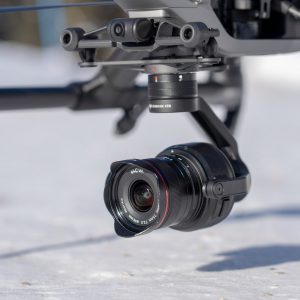
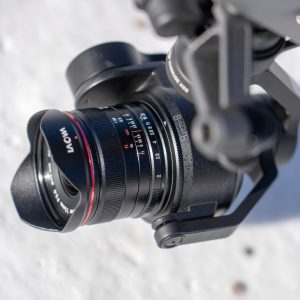
For example the Panasonic MDSLR GH-6 and it’s sensor is 4 years ahead, and it shows. But nevertheless. I never would have thought that I could capture the Milky Way with a Drone camera like the X5s…
And now as the DJI I3 is on the Horizon, and maybe Sony fixes the heap of Problems the Air Peak has…, converts it into a reliable unit with long flight times, a not-vibrating gimbal, great remote range etc one could say: The future of Drone Landscape Astrophotography could be promising!
I hope you enjoyed my little compilation here. I will add more info to this page over time, so check back regularly.
Best regards,
Christoph Malin



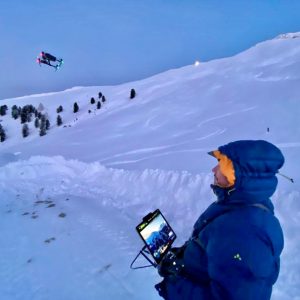
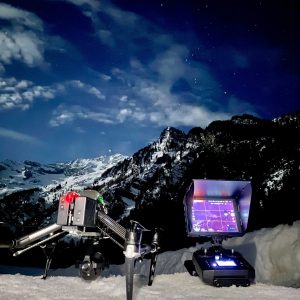
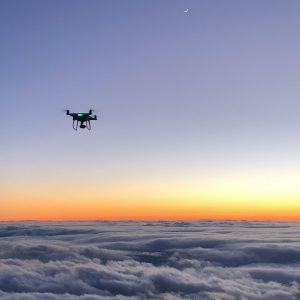
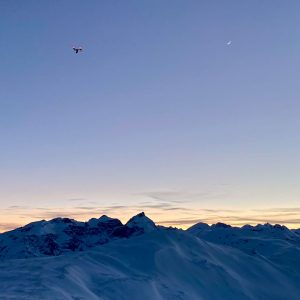
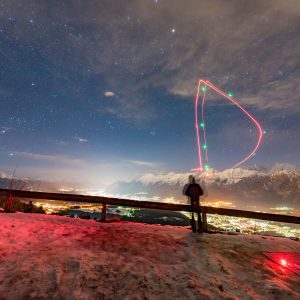
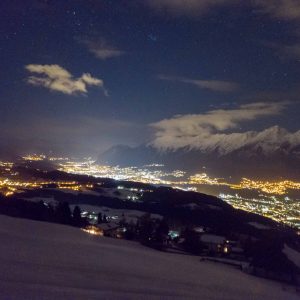

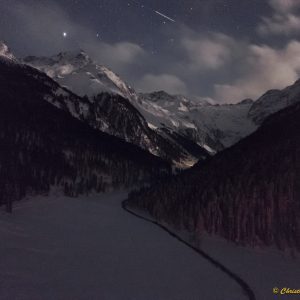
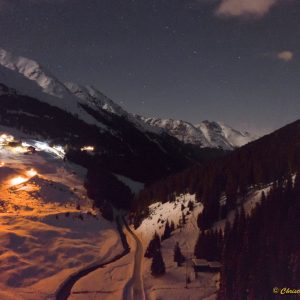
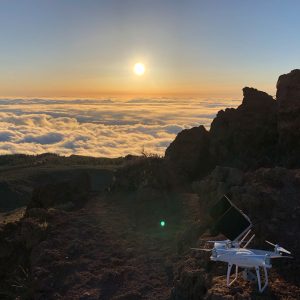
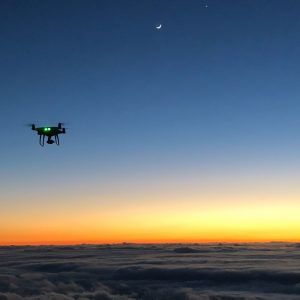
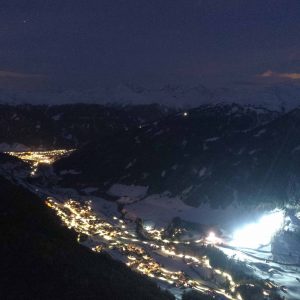
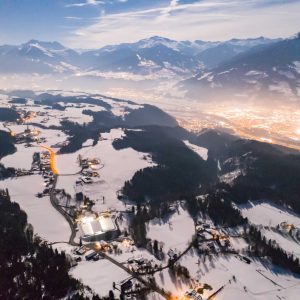

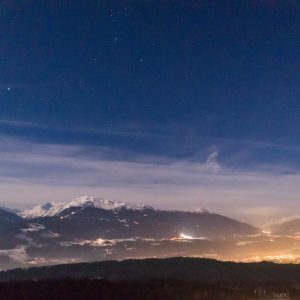
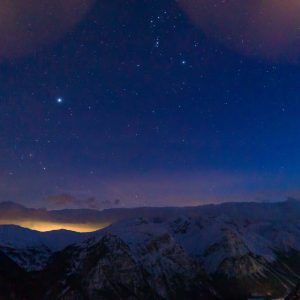
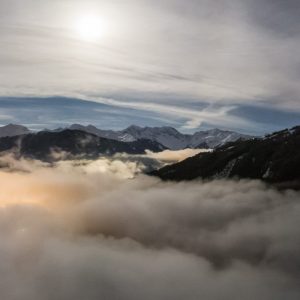

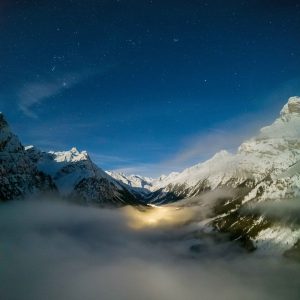
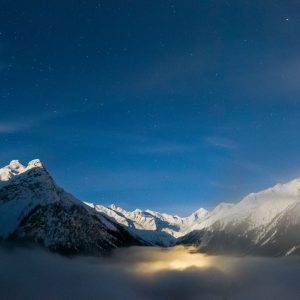
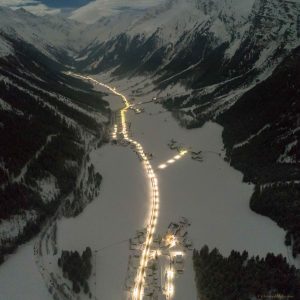
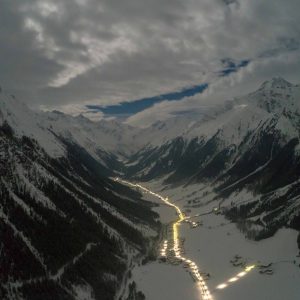
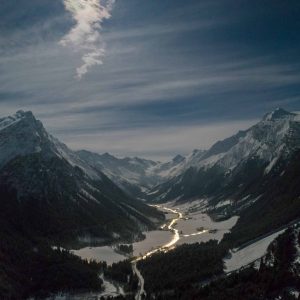
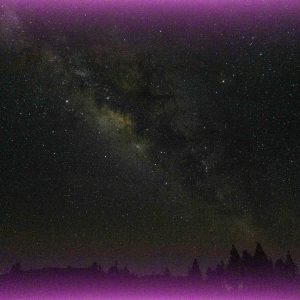
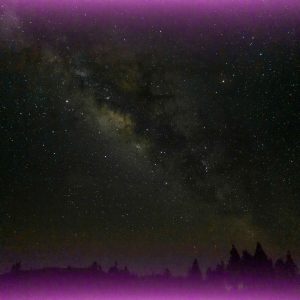
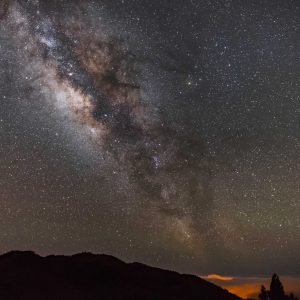
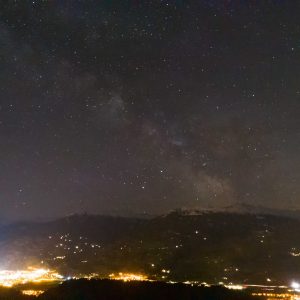
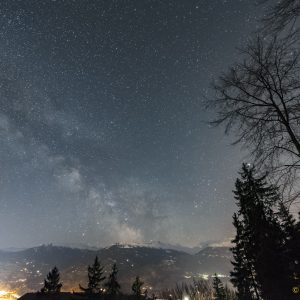
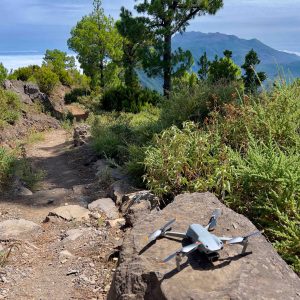
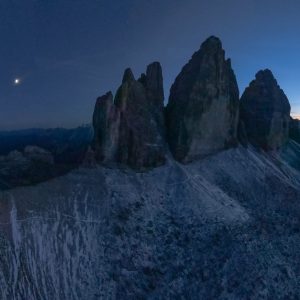
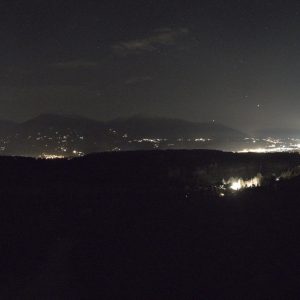
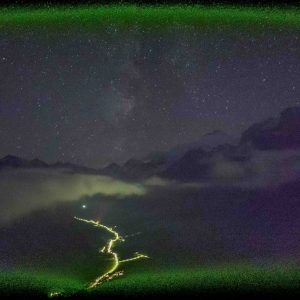
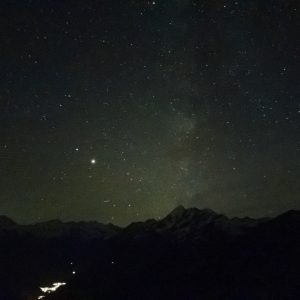
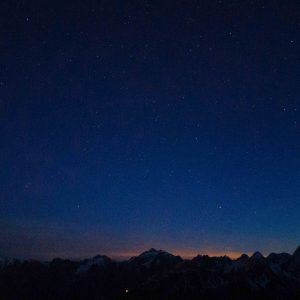
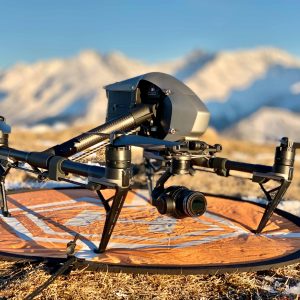
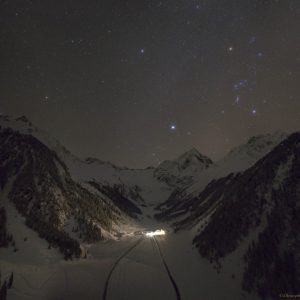
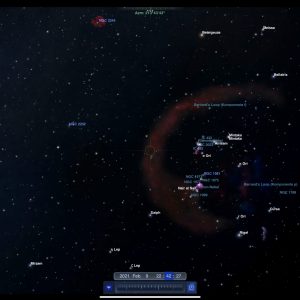

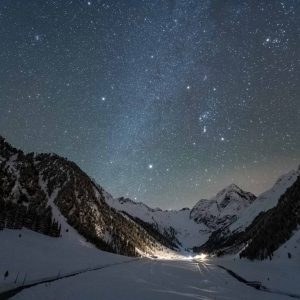
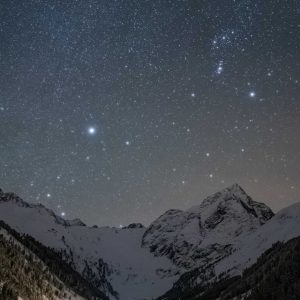
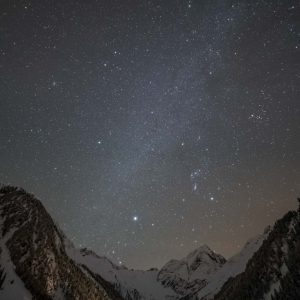
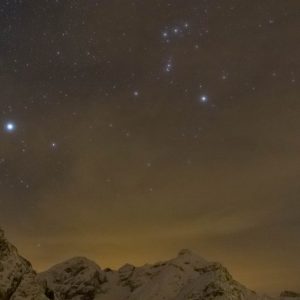
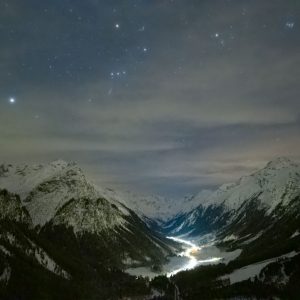

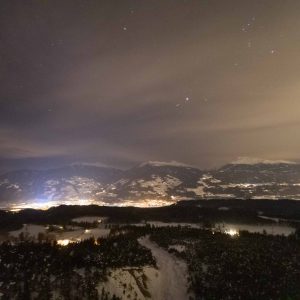
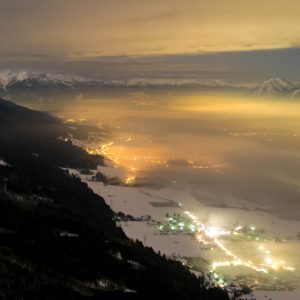
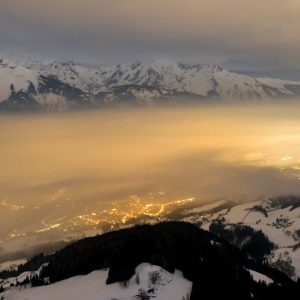
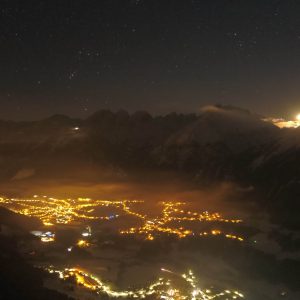
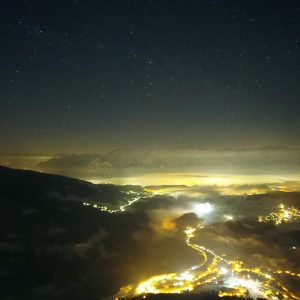
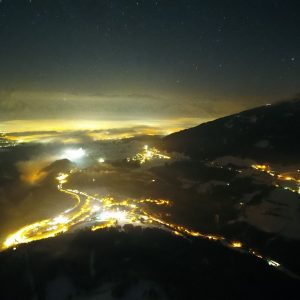

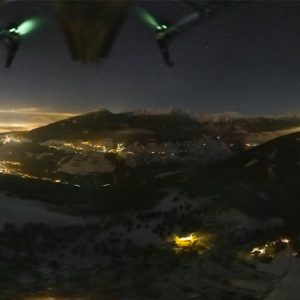
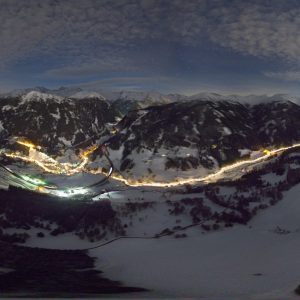
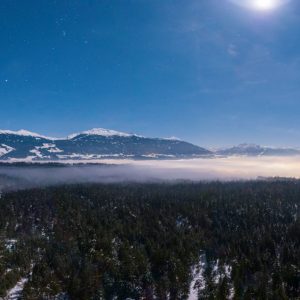

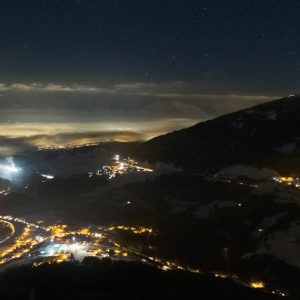


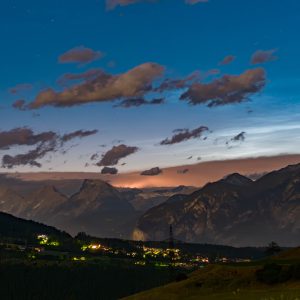


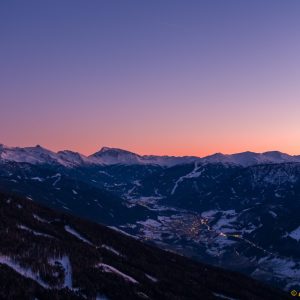
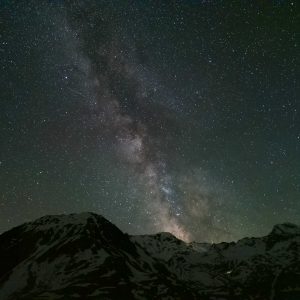
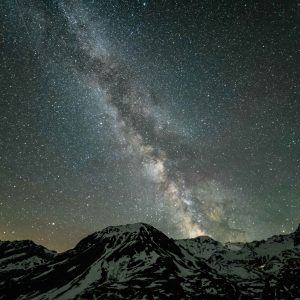
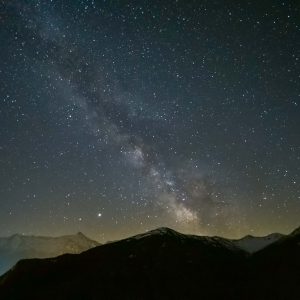
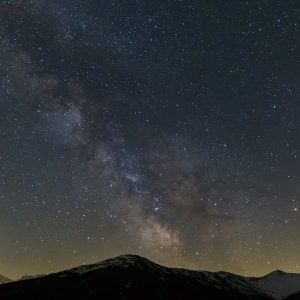
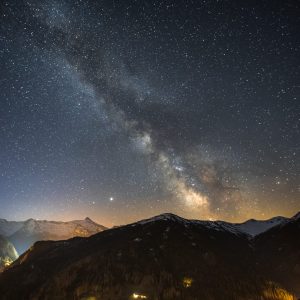
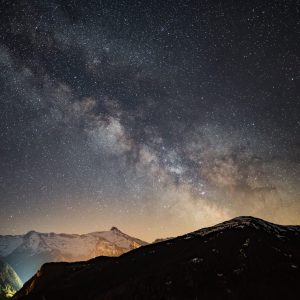

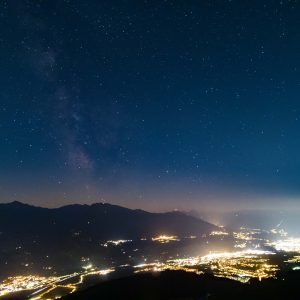

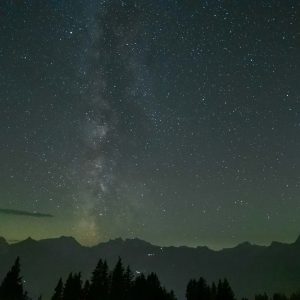
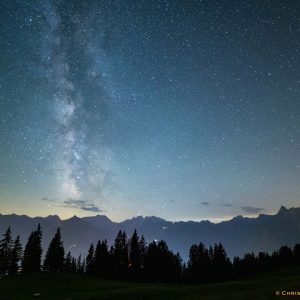
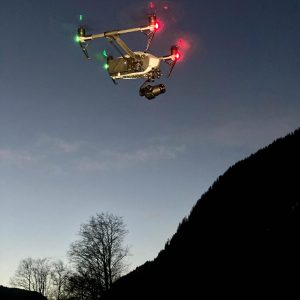
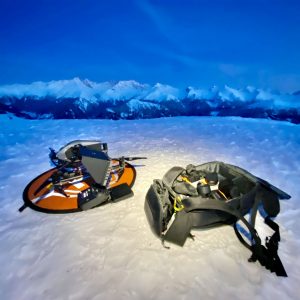

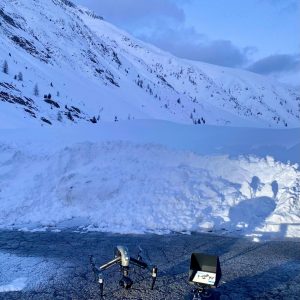

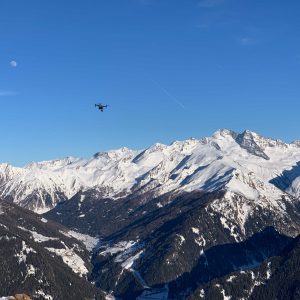
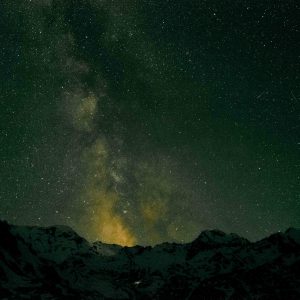
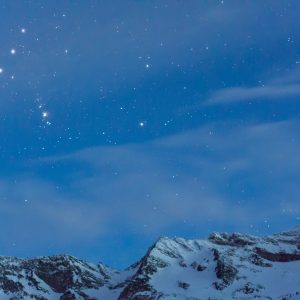
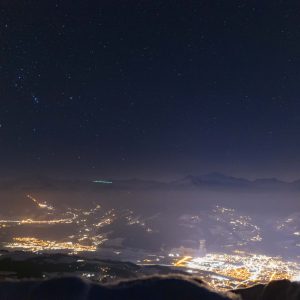
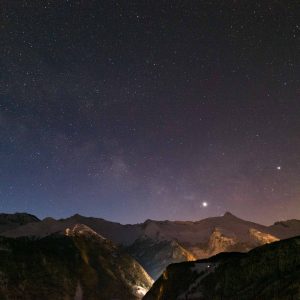
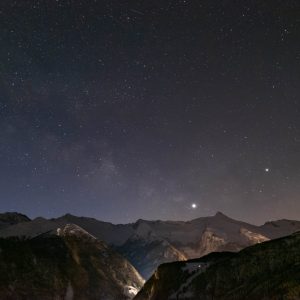
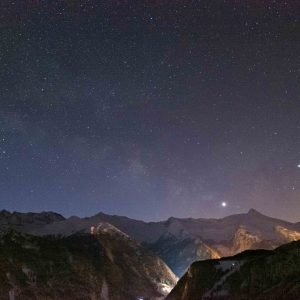
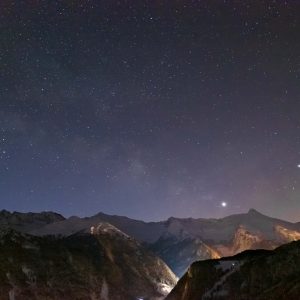
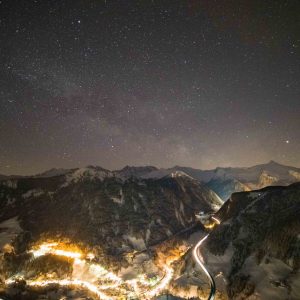
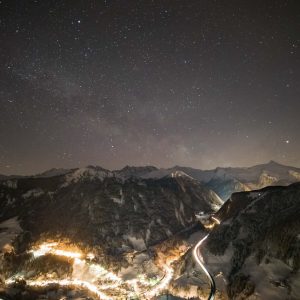

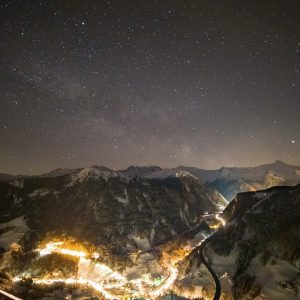
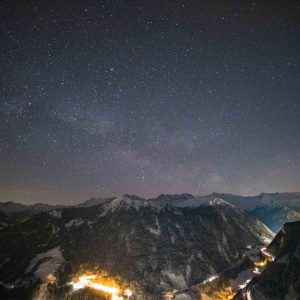
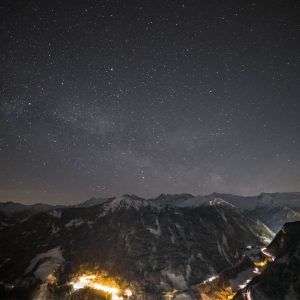
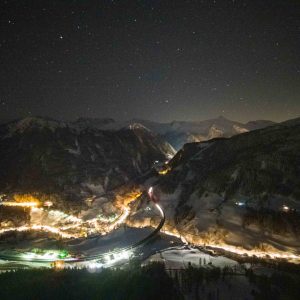
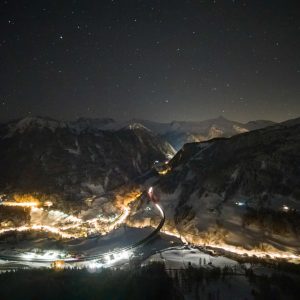
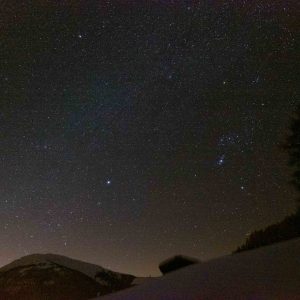
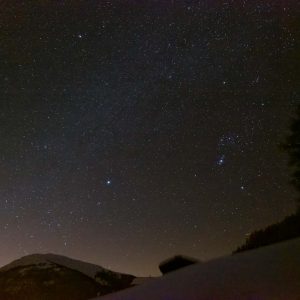
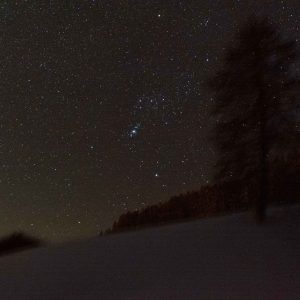
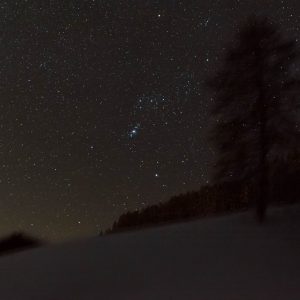
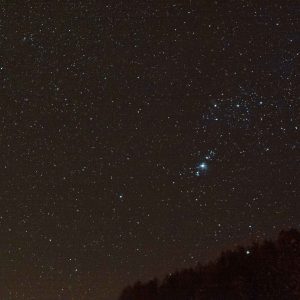
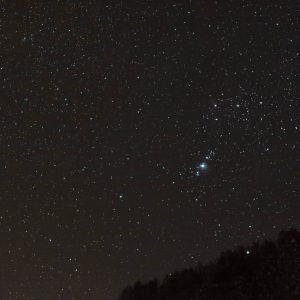
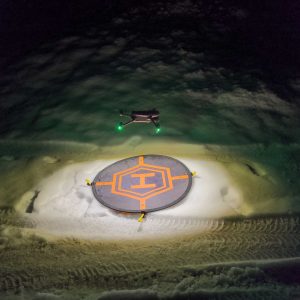
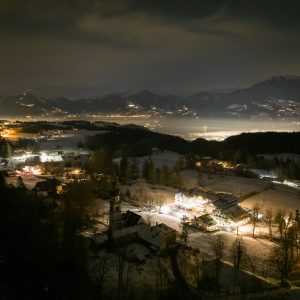
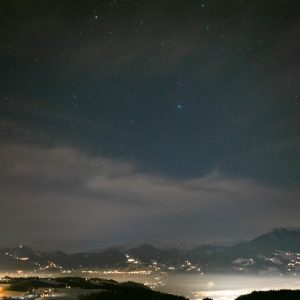
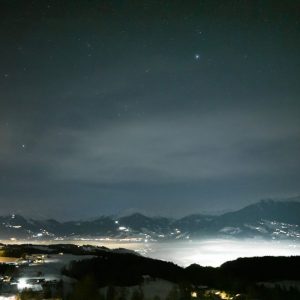
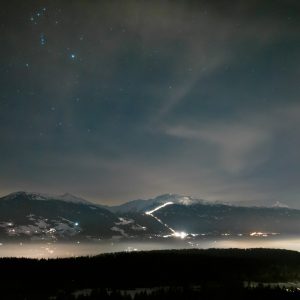
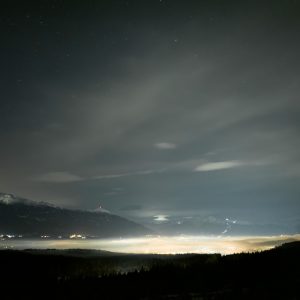
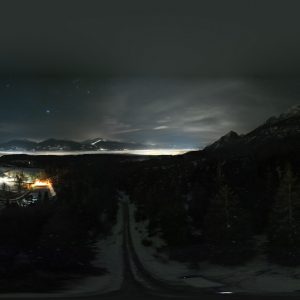
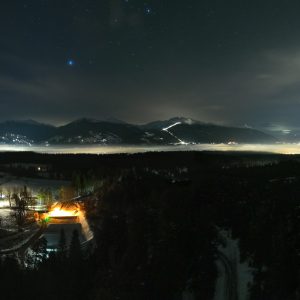
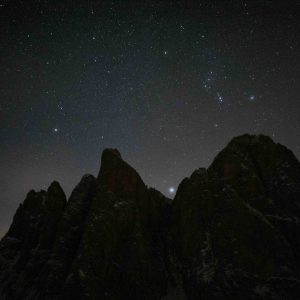
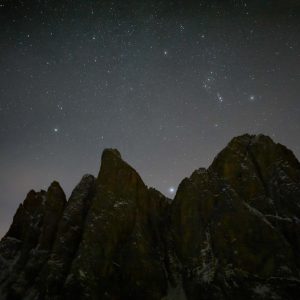
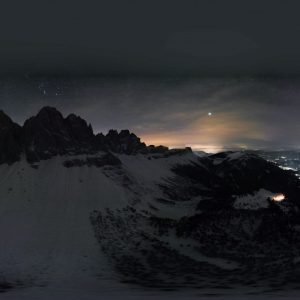
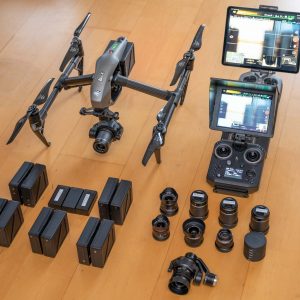
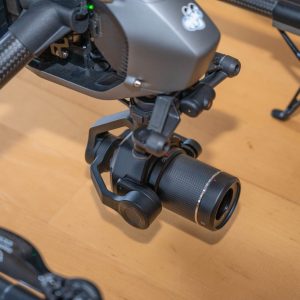
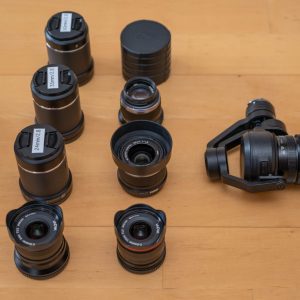
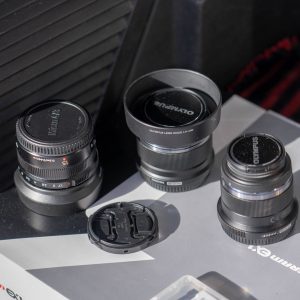
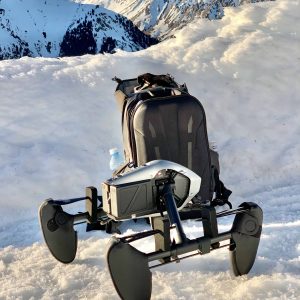


No responses yet